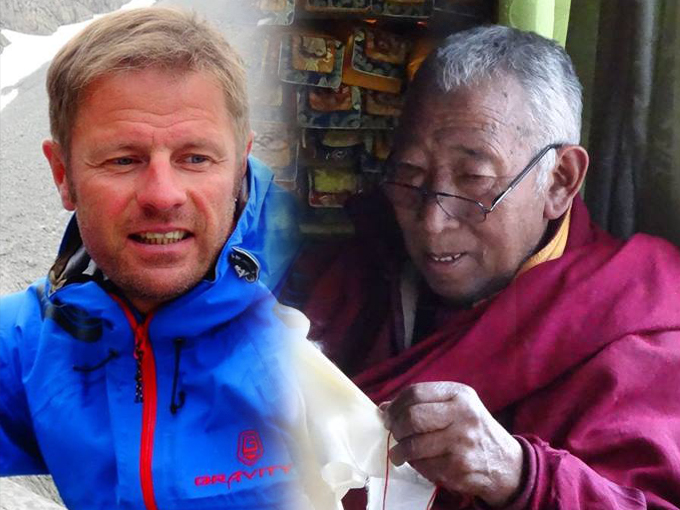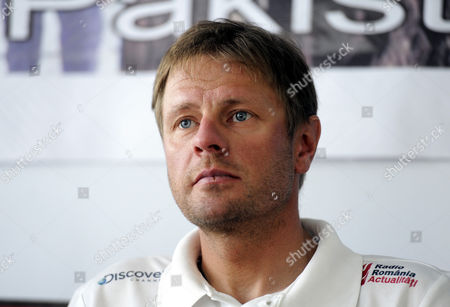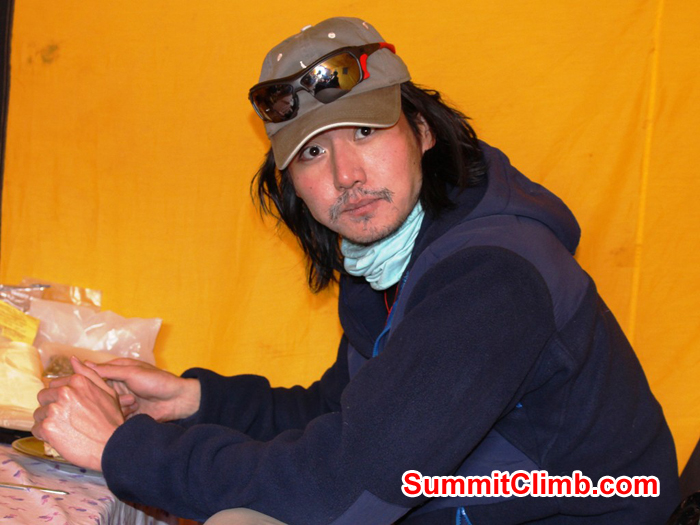Zsolt Torok
- Find the best information and most relevant links on all topics related toThis domain may be for sale!
- Romanian mountaineer Zsolt Torok perished in a solo fall last week in the Fagaras Mountains. It is believed that a hold broke while he was traversing the Sawtooth Ridge east of Negoiu Peak, a rarely traveled 3A route known for its unstable rock.
Our Romanian athletes, Zsolt Torok, and his team reached a great achievement this autumn in Nepal. Into the very crowded Khumbu Valley, in the middle of the Earth’s giants Everest and Lhotse, he concluded a project already attempted last year.
The latest tweets from @ZsoltTorok.
At that time he and his compatriot Vlad Capusan were forced to interrupt the ascent after an avalanche hit them on the wall above 6000 m. His report transmit a wide mix of emotions for this dream come true that will be applicate to the Piolet d’Or.
Mt. Pumori- 7161 m

New route – Le voyage du Petit Prince
South – East Face
Team : Romeo Popa – Teofil Vlad – Zsolt Torok
Engagement – Major
Level difference between Base Camp and Summit – 1856m
Zsolt Torok Wikipedia
October 12th 2018 – October 21st 2018
Hi Zsolt, the higher Khumbu valley peaks are well-known by everyone, amateurs included. But Pumori is not so attempted, explain to us something more about this mountain…
Mount Pumori is one of the most emblematic and difficult summits of the Solu Khumbu region. It is located near Mount Everest, right in front of it, that’s because its name means the Untamed Daughter of the Mountain. This huge pyramid attracts all eyes, both of those who are there just for trekking towards Everest Base Camp as well as those of the climbers that come to the area.
Although the area is very frequented from tourist and trekkers, the summit is attempt only from few people…
While, at a short distance, on Mt. Everest , annually an industrialization of climbing takes place, an extremely commercially one, it might be said, the abrupt slopes and the walls of Pumori remain silent and unpopulated. The difficulty and the high engagement perform a selection of the suitors. Pumori has a very low rate of success, even on the easiest route– the classic one.
How long did you project this line?
The idea of a new line struck to my mind ever since 2015, the year of the earthquake in Nepal, when I had the chance to study the walls well and I inferred a new route on the South-East face, still new, not climbed. Le Voyage du Petit Prince starts at 5660 m from the basis of the steep glacier (place as a sort of cone motion for the avalanches).
We know well that for you the style of an ascent is much important as the objective: which climbing strategy did you choose?
For us the strategy chose couldn’t be only this: alpin style by a single push ascent. Our team, composed of Romeo Popa, Teofil Vlad and me decided to install a tent at 5660, right at the basis of the glacier in order to have it as a starting point to our route. We can call it Advanced Base Camp. Here we gathered the gear, food, gas, everything we needed in order to have enough resources for the ascension.
From this point on, considering the type of field, we established places for three bivouacs on the wall and on the fourth day we planned to finalize the wall and establish the last camp on the ridge towards the summit.
There, in Camp 4 we had to wait one more day, hoping that the strong winds will decrease in intensity and thus we would have an acceptable weather to reach the summit.
You mean that, althougt from there there was few hundreds meter to the top left, you stayed one full day into the tent without the possibility to attempt the summit?
Exactly, to be honest, we do not know whether the day of the summit was better or worse than the one spent waiting. But one thing is for sure we reached the summit on a windy day with 105km/h gusts and real feel of cold of -27C due to the windchill.
In these type of ascent often the risksy phase is the descent, especially on these steep and technical peaks without a real easy route. Did you go down along the route just tracked?
No, it would be hazardous. The descent has been along the western part of the mountain previously examined by us.
How were distributed the major difficulties during the days of ascent?
The day 1 we woke up at 1 AM, ate something very quickly and we started the climb at around two o’clock on the steep glacier, rough, full of ice needles reaching hundreds of meters towards the well known “bottleneck”. The light of the day appears at about 5.30, so, a big part of it, we crossed trough by front lights. Just before the “funnels” we re-organized and we started the climb on clear ice towards the first ice field. Going beyond vertically and also overhung passages inside the funnels, we reached the first ice field, where we started to climb obliquely right. Considering the mountain dimensions, we climbed many rope lengths (60m) and we belayed in snow-bars, in bolts of ice or a combination of these. Belay place were uncomfortable and suspended. Reaching the first ice field we tried to find the way upwards on the ice threads using the stone connections in combination with ice, mixed scale (M4 degree).

Opening a new route one of the major worries is to find good spot to spend the nights…
We were on the left side of the wall and the time for a new bivouac was approaching fast. That was a very difficult place to find on that wall, considering that there were no mountain paths or platforms at all. The strategy was to look for a good place in due time and not push upwards until the dark came. This would decrease the chances to find a good place and endangered the next day. The first bivouac was at 6050m, very wretched.
Did the bad night debilitate your bodies a lot?
There was not enough room and we spent a difficult night. Luckily the next day started good and we advanced length by length on an less steep terrain as we had already spotted where we would enter the feared ramp – the key passage of the route which was located in the superior third. Towards right the difficulties were increasing and at a certain point, we, inevitably, found ourselves on verticals where we had to find connections between sections. This was the most beautiful technical part of the route (M5), a spectacular and pleasant ascension, professionally satisfying. The second day brought about a promising direction and we entered the Ramp, found an ideal place for bivouac, the only one in the whole wall. It was a large overhang as in a lodge, the snow could be made smooth and even and so, create a good place to sleep. Altitude – 6250m. This second bivouac was perfect.
Thus, the third day, you started entering upon the famous Ramp…
Yes, and with new forces thanks to the better night. The difficulty up to M6 and a combination of spectacular climbing on ice and bad rock with vertically and hangover passages. Getting out of the Ramp was the most difficult and suddenly here the ice ended, and the connections were scares. In this section there was no possibility of using stone protections. There was a pillar of rock which broke and we had to climb it using a large split in order to comprise the two walls. The passage was hangover(M6). After getting out of the Ramp, there was an upward towards left and after one more rope length(60m) we climbed in the Spider (named because similar to the notorious ice slopes on Eiger). This is very abrupt 60-70 degrees and offered only one place for the tent. Altitude – 6450m.
Now finally did the difficulties decrease a little bit? The altitude started to be perceived…

Not yet, day 4 started directly with the last key length, the way out of the Spider- M6 degree(one rope length-60m). This length was so difficult because it was really up and also because here the sun left little ice so we needed to find the perfect combination with the rock in order to go forward. After 60 m the way towards the ridge opened. Up to there we had four more lengths, climbing among ice formations (made by the wind similar to the pipes of a musical organ) included a small part M4. We got out on the sharp ridge of the summit at 6776m. Here we established Camp 4.
Zsolt Torok Death

At that point the summit was to be quite close, I suppose…

Yes, but on the ridge instead of the wall we were full exposed to the wind that the day after blow strongly all day long. So we take the difficult decision to wait more favourable weather conditions. The day after we started the ascension towards the summit, but the weather tested us heavily. It was extremely cold and we waited for the wind to cease or at least to decrease a little. We postponed leaving the tent. There were 386 meter more, but we decided to do this during the sun was up. The wind was so strong that it literally put all the three of us down. Nevertheless, slowly but safetly, we advanced, with great care not to fall. At three o’clock we reached the summit, defying the weather and we benefited from approximately 40 minutes of relative calmness. We could , thus, take the photos and then we went back to Camp 4.
You’ve already left the advanced camp since a week and the descent is often the riskier phase, tiredness brings less lucidity.
We prepared the retreat on the Western flank on an imposing wall, but easier to approach than the one we had climbed. We abseiled down to the glacier at the mountain basis for about 13 hours. We used all methods of anchoring and of making fixed points from which to abseil. Pitons, abalakov, ice screws, slings left on edges, snowbars in not very good snow. All abseils were 60 m using the ropes to the maximum. We camped at 5760m altitude.
From there finally It was only easy walking coming back to the base camp?
Not really, the retreat from the great glacier was pure art. When we were still up, we identified the right side of the glacier where, overpassing the crevasses, there was a detritus which seemingly was connected to the bottom of the valley. After some long hours we got rid of that passage among the labyrinth of small walls and highly instable stones. Finally, from the bottom of the valley there was an eight hour long trek towards Gorac Shep. The next day we went back to Base Camp in order to celebrate with the others.
In conclusions, the dream that was so important for you has been at the high of yours expectations?
The route “Le voyage du Petit Prince “represents a beautiful and direct route, a perfect synthesis of the true sense and meaning of mountain climbing for the Pumori mountain and it is of high engagement.
What about the difficulties?
Cumulatively, all the difficulties depend on the conditions (in our case they were good), considering my experience in the Alps on the great walls (Eiger, Grandes Jorasses, Matterhorn , Drus, Civetta) I can strongly say that the route on Pumori is ED category with the specification that this is on a 7000er mountain. Beyond the difficulty engagement and degree though, I would highlight the beauty of the route which unfolds in the most beautiful scenery with the giants of the world, Everest, Lhotse, Nuptse around with all their greatness.
Which CT products did you adopt during the expedition and what features did you appreciate more?
I have used all the variety of CT, from the helmet to the ice axes, crampons, ice screws, snow bars, rucksack etc. Also, my colleagues used especially technical ice axes North Couloir and the previous model. Spectacularly, CT has produced top equipment for the last years and this means maximum manoeuvrability with light weight and attractive design. Each product individually, has both advantages and special features but if I have to highlight some, I would mention the ice axes, crampons and the ice screws. The most important piece for a climber is the ice axe. The carved form, the equilibrium, and the hitting angle/point make the modern ice axes help enormously the climber. I can gladly state that they are exactly what climbers need in order to approach alpine walls as me. Since Cerro Torre, I have started to use the monopoint crampon Hyper Spike. I had the opportunity to test it in many climbing this year. I believe the products I’ve just mentioned are the strong points of the company.
Why the name of the route “Le voyage du Petit Prince”?
This is the question I love most. The Little Prince is pure, very pure and he travels through the universe in order to gain wisdom. Along the way he meets various characters and he dialogue with them in his original way. The name of the route is a message, a coded one, for those who know how to understand it, for those who faced life with the same pure curiosity. I can find myself in the story of the Little Prince: when he asked a question, he never gave up until he obtained the answer. Similarly, I never gave up my projects until I reached my target. Our route is like life and the journey of Little Prince. He was somewhere far away, he is very complex, in order to reach his destination, he meets various people. We may be travellers through this universe, but since the moment we are born and until we leave somewhere else, it is important what we do with our time and what values we believe in. The Little Prince never gave up believing in his values…
Zsolt Torok
- The wall (in red circle the team going up)
- Organizing the gear
- A passage on a ridge
- Some of the Climbing Technology gear used during the expedition
- Pumori summit
- Zsolt ascending a steep ice slope
- The Kumbhu’s giant
- Solo Khumbu’s trio into the sunset light
- Zsolt at the top of Lobuche during the acclimatization phase